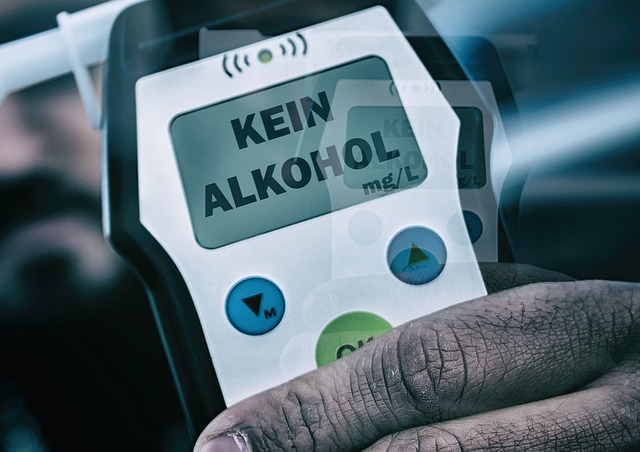Community service for DUI offenses leverages educational projects focused on Vehicle Safety Features and DUI Law to promote accountability, personal growth, and public safety. By participating in initiatives like educational campaigns, blood drives, and mentorship programs, offenders can redeem themselves while empowering communities with knowledge about responsible driving and advanced vehicle safety technologies. These efforts aim to prevent future incidents, foster social responsibility, and contribute to a culture of safer roads.
Community service offers a path to redemption for those convicted of DUI offenses. This article explores how community service can serve as reparation, focusing on its role in prevention and positive social impact. We delve into specific projects, legal implications, and success stories, highlighting the significance of vehicle safety features in reducing recidivism. By examining these aspects, we aim to showcase the transformative power of community service within the context of DUI law.
- Understanding Community Service as Reparation for DUI Offenses
- The Role of Vehicle Safety Features in Prevention and Redemption
- Effective Community Service Projects: Making a Positive Impact
- Legal Implications and Success Stories: DUI Law and Community Service
Understanding Community Service as Reparation for DUI Offenses

Community service, an integral part of many restorative justice systems, offers a unique approach to addressing DUI (Driving Under the Influence) offenses. When an individual is convicted of DUI, community service can serve as a form of reparation, allowing them to give back to their community while raising awareness about vehicle safety features and the implications of impaired driving under the DUI law. This act of service demonstrates accountability and a commitment to preventing future incidents.
By participating in community service projects related to traffic safety, offenders can educate others on the importance of adhering to vehicle safety standards, such as wearing seatbelts, maintaining a safe speed, and refraining from drinking and driving. This hands-on involvement not only benefits the community by increasing awareness but also provides an opportunity for personal growth and a deeper understanding of the impact of their actions under the influence.
The Role of Vehicle Safety Features in Prevention and Redemption

In the context of community service as a form of redemption, especially for offenses related to driving under the influence (DUI), understanding the role of vehicle safety features becomes pertinent. Advanced safety technologies in modern vehicles play a crucial part in both preventing such incidents and facilitating rehabilitation. Features like automatic emergency braking, lane-keeping assist, and advanced driver-assistance systems (ADAS) contribute significantly to road safety, potentially reducing DUI occurrences by alerting drivers to potential hazards and helping them maintain control.
These safety features offer not just preventive measures but also serve as a tool for redemption. Community service initiatives can incorporate education on vehicle safety and the responsible use of these features, empowering individuals to make amends by sharing knowledge that could save lives. In light of this, integrating Vehicle Safety Features and DUI Law awareness into community service programs presents an opportunity for personal growth and positive societal impact.
Effective Community Service Projects: Making a Positive Impact

Effective community service projects go beyond mere compliance; they strive to make a tangible, positive impact on the lives of those around them. When planning initiatives, it’s essential to consider activities that directly address pressing local issues. For instance, organizing educational campaigns on vehicle safety features can empower drivers with life-saving knowledge, potentially reducing accidents linked to driver impairment. This strategic approach aligns community service with real-world challenges, such as enforcing DUI laws, thereby fostering a safer environment.
These projects should also promote active involvement and collaboration from the community. Engaging volunteers in direct service, whether through blood drives, environmental clean-ups, or mentorship programs, amplifies their impact. By empowering individuals to take initiative and contribute, these efforts not only address immediate needs but also cultivate a culture of social responsibility that can lead to long-lasting change, including reducing DUI incidents by raising awareness about responsible drinking and driving.
Legal Implications and Success Stories: DUI Law and Community Service

In many jurisdictions, community service is a common alternative to traditional penalties for various offenses, including Driving Under the Influence (DUI). This approach offers a chance for individuals to give back to their communities while atoning for their actions. However, it’s crucial to understand that community service comes with legal implications. For DUI cases, offenders are typically required to complete a set number of hours of community service related to vehicle safety and traffic awareness programs. These activities can include educating new drivers, promoting safe driving practices in schools, or participating in campaigns that highlight the importance of sober driving and advanced vehicle safety features.
Success stories abound where individuals have turned their DUI mistakes into opportunities for positive change. By engaging in community service focused on Vehicle Safety Features and DUI Law, offenders become ambassadors for safer roads. They share their experiences to raise awareness about the consequences of impaired driving and the crucial role that modern vehicle safety technologies play in preventing accidents. These efforts not only meet the legal requirements but also foster a culture of responsible driving within the communities they serve.
Community service, as a reparative measure for DUI offenses, offers a path towards redemption and positive societal impact. By combining community service projects with advancements in vehicle safety features, we can create a culture of responsibility and awareness. The legal implications of these initiatives are clear, with success stories demonstrating the power of such programs to transform lives and reduce recidivism. Integrating Vehicle Safety Features into DUI Law plays a crucial role in preventing future incidents and fostering safer communities.






